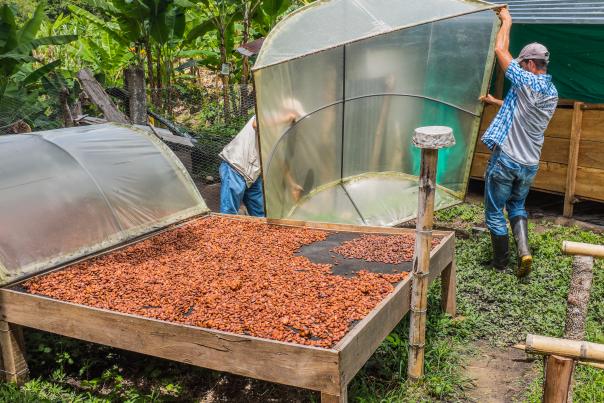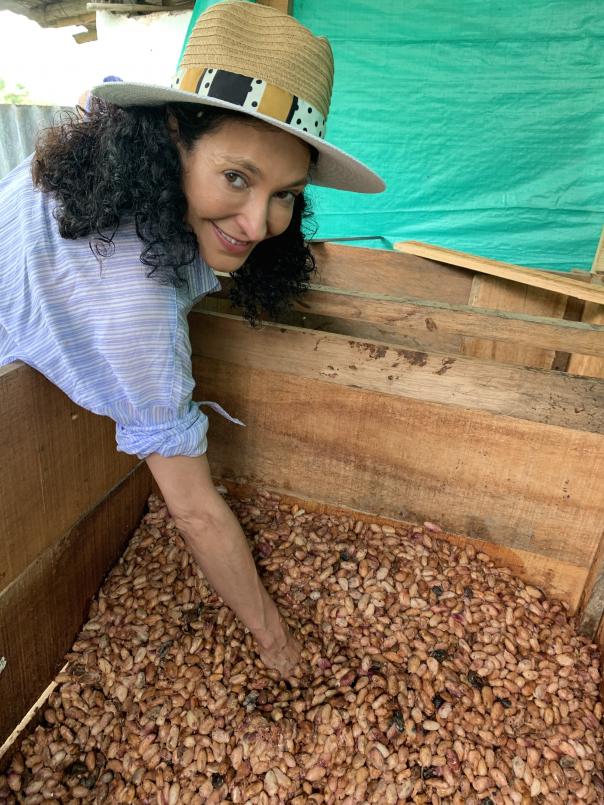

The first samples are due to arrive at Vicinanza-Bedi's Vegan Chocolates in early August. Here the beans will be roasted, ground and melted into bars of vegan chocolate.
Vicinanza-Bedi said: “I’ve tasted some chocolate from Columbia, and it tastes amazing so I am really excited to work with the growers there. Learning more about the fermentation process is something I want to do.
“I am excited to work with the scientists and the farmers because I do not know about what they do, and they won’t know how to make the chocolate, so it is a learning partnership.
“I work in the market where consumers appreciate super premium chocolate so I’m sure we can learn from each other and help Colombian farmers find the right price and the right market.”
Vicinanza-Bedi picked up a host of awards at this year’s Academy of Chocolate 2019 Awards.
The world celebrated World Chocolate Day on 7 July. It is believed that chocolate was first introduced into Europe as early as 1550.
Cocoa bean fermentation
Fermentation is the chemical breakdown of a substance by bacteria, yeast or other organisms. It plays a crucial role in the flavour of chocolate made from cocoa beans.
David Salt, director of the Future Food Beacon at Nottingham University said: “Like a sour dough fermentation in bread making, cocoa bean fermentation is performed by microbes living in the environment of the farm.
“However, the fermentation is generally spontaneous and uncontrolled. We hope to learn how this fermentation works on the farm in the hope of being able to better control it to provide the farmer with high quality, more flavourful cocoa beans.”
If there is a specific combination of yeast and bacteria that leads to a really good fermentation and a great tasting chocolate then the team may be able to find ways to help farmers to promote the growth of these microorganisms.
By 2050 there will be an extra two billion people according to estimates so it is crucial to develop resilient crops in order to feed the world’s growing population.
Why Colombia?
Colombia produces just under 1% of the world’s total cocoa, which is used by bean-to-bar artisan producers. The cocoa market is predicted to expand by up to 10% over the next five years.
The price of ‘super-premium chocolate’ is expected to rise as consumers desire more complex flavours.
DNA sequencing to improve fermentation
Fermentation is a vital because it removes pulp from around the beans and it removes bitterness, which affects the taste of the cocoa beans. The growers themselves carry out the process and they are able to manipulate fermentation and achieve the best possible flavour.
This is done using the innovative hand-held DNA and RNA sequencing device MinIon. It was developed by Oxford Nanopore Technologies to measure the microbes fermenting in the cocoa beans in order to better understand the fermentation process.
Dr Chris Moore, a specialist in genomics, said: “A range of bacteria and yeast that are present around the farm come together in the fermentation to convert the sugars from the pulp into alcohols and acids. These chemicals alter the composition and structure of the beans and changes the flavour of the resulting chocolate.
“The farmers use their knowledge and judgement to try to make sure that beans are fermented just the right amount. However, this is a biological process relying on the microorganisms that are present and these will vary from farm to farm and fermentation to fermentation.
“We will be monitoring the microorganisms present in the fermentation over time. This will involve extracting DNA from the gooey pulp that surrounds the beans and then sequencing this DNA to identifying what is growing in it.
“We also want to know where the microorganisms in the fermentation come from, so we are sequencing DNA isolated from the surface of the cocoa plants, the soil on the farm and on the surface of the equipment used in the fermentation process. By using the MinION sequencer, we can do the sequencing of this DNA out on the farms.”